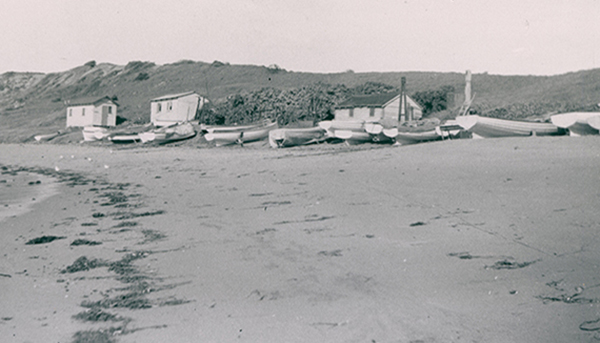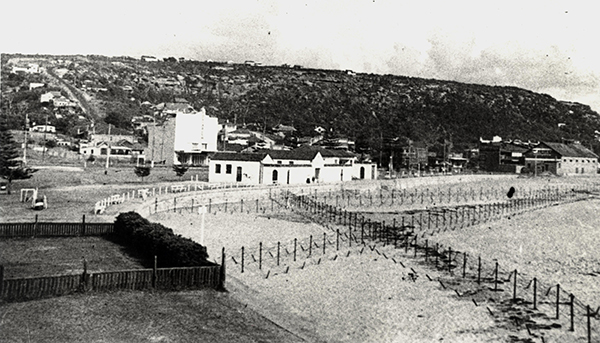
240 million years of history

Geological origins
Long Reef was formed over 240 million years ago in the Triassic Period and is rare in the Sydney region for its chocolate shales, claystones and ironstones.
These rocks are some of the oldest exposed rocks on this coastline and give the area and the water around Long Reef a reddish appearance.
Part of a fossilised jawbone and a thigh bone of a giant amphibious carnivore that roamed the area in the Triassic were discovered on Long Reef. The whole jawbone is estimated as 1 m long.
It was scientifically named Bulgosuchus gargantua and is only known from Long Reef.
Human habitation
The traditional custodians of this area are the Garigal people and the Gannagal (also known as Cannagal) people of the Eora nation.
Shell mounds (middens) are found on the north-eastern side of Long Reef.
These include weathered and burnt shells built up over hundreds of years from Aboriginal people harvesting food.

Fishermans Beach may have been used by Europeans as early as the 1870s to launch fishing boats. Fishers’ huts recorded here may also date from this period.
The hut still present at this site is thought to have been built in the 1930s.
Shipwrecks
There are records of 25 shipwrecks and scuttlings associated with Long Reef on the Australian National Shipwreck Database. Despite the prominent headland, no lighthouse was built.
Between 1815 and 1915, many shipwrecks occurred. For example:
- the steamer Duckenfield sank after running aground on Long Reef headland in 1889
- the paddle steamer Euroka sank at Fishermans Beach in 1913.

War-time training and surveillance
In 1942, the Australian Defence Force commandeered the southern portion of the golf course at Long Reef for coastal surveillance, training and manoeuvres.
Conservation efforts
By the mid-1970s, Long Reef’s flora and fauna had become seriously depleted due to the intensive collection of food and bait. It was in serious need of protection.
In 1980, the first aquatic reserve in NSW was declared at Long Reef to protect the intertidal plants and animals, and to ensure that scientific research and education could continue at this site.
Since then, thousands of schoolchildren have visited Long Reef Aquatic Reserve to learn about marine life.

